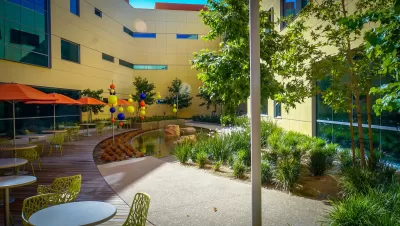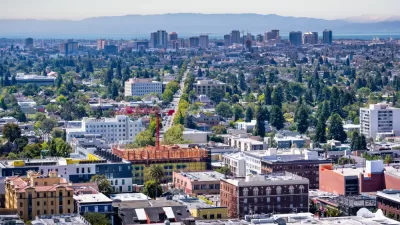Much of the focus on decreasing carbon emissions is on the electrical grid and vehicles. But, buildings are a huge contributor, and California is leading the way in making electrification a priority.

David Roberts writes about California’s Building Decarbonization Coalition and its report on the challenges in shifting buildings from fossil fuels to electricity. With 40 percent of global and U.S. greenhouse gas emissions coming from buildings, a push for decarbonization is essential, says Roberts.
The report says that new buildings should be designed so they do not rely on fossil fuels and that the state should adopt zero-emissions building codes for both residential and commercial buildings. The real hurdles, however, lie with the large number of existing buildings, particularly in convincing building owners, contractors, and policymakers about the merits of electrification.
The report also argues that electrification technology needs to be available on a larger scale to bring down costs. In addition, standards and policies should better support building decarbonization, and coordination among stakeholders is important. "The problem is that decision makers in the building sector are highly distributed. Owners, contractors, utilities, regulators, local officials, and state legislators all have some say in how buildings are built and run," notes Roberts.
FULL STORY: A California coalition is tackling one of the hardest, unsexiest parts of climate policy

Alabama: Trump Terminates Settlements for Black Communities Harmed By Raw Sewage
Trump deemed the landmark civil rights agreement “illegal DEI and environmental justice policy.”

Study: Maui’s Plan to Convert Vacation Rentals to Long-Term Housing Could Cause Nearly $1 Billion Economic Loss
The plan would reduce visitor accommodation by 25% resulting in 1,900 jobs lost.

Why Should We Subsidize Public Transportation?
Many public transit agencies face financial stress due to rising costs, declining fare revenue, and declining subsidies. Transit advocates must provide a strong business case for increasing public transit funding.

Paris Bike Boom Leads to Steep Drop in Air Pollution
The French city’s air quality has improved dramatically in the past 20 years, coinciding with a growth in cycling.

Why Housing Costs More to Build in California Than in Texas
Hard costs like labor and materials combined with ‘soft’ costs such as permitting make building in the San Francisco Bay Area almost three times as costly as in Texas cities.

San Diego County Sees a Rise in Urban Coyotes
San Diego County experiences a rise in urban coyotes, as sightings become prevalent throughout its urban neighbourhoods and surrounding areas.
Urban Design for Planners 1: Software Tools
This six-course series explores essential urban design concepts using open source software and equips planners with the tools they need to participate fully in the urban design process.
Planning for Universal Design
Learn the tools for implementing Universal Design in planning regulations.
Smith Gee Studio
Alamo Area Metropolitan Planning Organization
City of Santa Clarita
Institute for Housing and Urban Development Studies (IHS)
City of Grandview
Harvard GSD Executive Education
Toledo-Lucas County Plan Commissions
Salt Lake City
NYU Wagner Graduate School of Public Service





























